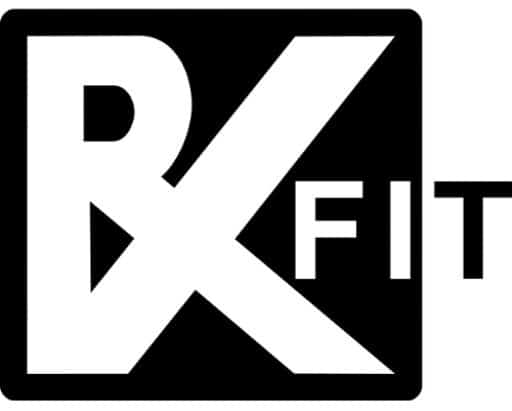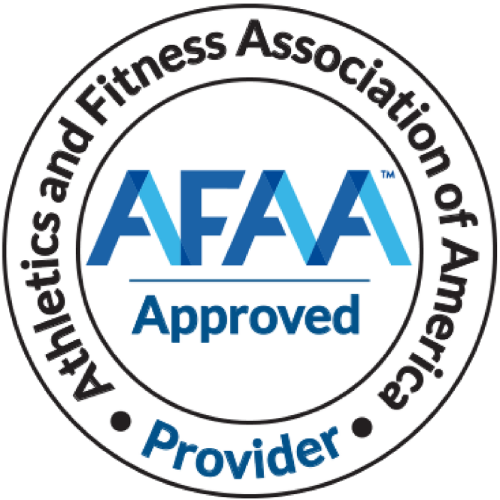Creating a personalized fitness program can be one of the most empowering steps you take toward achieving your health goals. Whether you want to lose weight, strengthen your upper body, or increase your muscle mass, a proper training program and workout routines can help you get there. This is a sure way that you can be in charge as you tailor workouts to your preferences, schedule, and fitness level. Here at RxFit, we will show you how to create a fitness plan for yourself that does exactly as it’s intended.
Importance of a Personalized Fitness Program
A personalized fitness program can go a long way because everyone’s body and goals are different. By designing your own plan, you can focus on what you enjoy and what helps you progress. This tailored approach not only increases the probability of you sticking the program out but also makes working out more enjoyable.
Benefits of Self-Created Fitness Programs
So how can creating your own fitness program be a game-changer in the real world?
Flexibility
One of the biggest perks is the ability to tailor your workouts to fit your schedule. According to LifeHack, 90% of people quit after three months of going to the gym. This is in part due to being unable to make formal training sessions fit into your busy schedule. Whether you’re a night owl or an early bird, you can design a routine that works for you. No more rushing to a 6 AM class if you’re more of a 10 AM person
Ownership
When you craft your own fitness journey, it becomes uniquely yours. You get to decide what exercises resonate with you, which makes the process much more meaningful. Plus, there’s something really empowering about taking charge of your health and mastering your personal gym sessions!
Adaptability
Life is full of surprises, and so is your fitness level! Whether you’re ramping up your workouts or need to scale back for a bit, your program can easily evolve with you. So how to create a fitness program for yourself that’s adaptable? If one day you feel like a high-energy dance party and the next you need some calming yoga, bear in mind that you’ve got the freedom to switch it up without missing a beat.
Overcoming Common Fitness Barriers
We all hit roadblocks on our fitness journey. Emily Rudrow put it nicely: whether it’s a packed schedule, a dip in motivation, or just feeling overwhelmed, all of us can face off against mental roadblocks on our journey to fitness. But don’t you worry, the first step to overcoming these hurdles is recognizing them.
Treating your workouts like important appointments allows you to block out time in your calendar so you can stay accountable and prioritize your well-being. RxFit just wants you to remember that finding joy in movement is half the battle already won! This could be dance, hiking, or a new sport. Try out different activities until you discover what makes you excited and take an equally excited, friend along for extra motivation.
Assessing Your Fitness Level
Before diving face-first into a brand-new fitness program, it’s important to get a good grasp of where you currently stand. Understanding your fitness level not only helps you track progress but also ensures that you set realistic goals.
Conducting a Fitness Assessment
Let’s explore how to conduct a simple fitness assessment and exercise testing. Focusing on these three main areas can give you a comprehensive picture of where your fitness level currently stands. And if you’re still not sure if you’re gauging yourself correctly, the RxFit team is available to guide you in the right direction.
Cardiovascular Endurance
A straightforward way to assess your endurance is with a 1-mile walk or run. Grab a stopwatch, head to your favorite park or track, and see how quickly you can complete it. This time will serve as a baseline for your cardiovascular endurance, and as you progress, you can celebrate your improvements!
Strength and Flexibility
For strength, try out some basic compound exercises like push-ups and squats. Count how many you can do in one go. There’s no need to impress anyone with how many reps you can do; just do your best! For flexibility, the sit-and-reach test is a classic. Sit on the floor with your legs extended and reach forward as far as you can. Document your reps and reach distances to see how you improve over time.
Body Composition Analysis
Understanding your body composition can be enlightening, as you will better be able to figure out how much weight you can lose healthily and where to gain muscle mass. You can use body fat scales or calipers to measure your body fat percentage. This insight can help guide your goals and show you where you might want to focus your efforts.
Setting Realistic Goals
Once you’ve assessed your physical fitness level and muscular endurance, it’s time to set some goals.
Short-term vs Long-term Goals
Short-term goals are fantastic for keeping motivation high. For example, committing to exercising three times a week for a month can create a strong foundation. On the other hand, long-term goals, like training to run a 5K in six months, (make sure you’re wearing the right shoes for this), provide a bigger picture and a sense of direction.
SMART Goals Framework
To ensure your goals are effective, our team at RxFit wants you to consider using the SMART framework. This means setting goals that are Specific, Measurable, Achievable, Relevant, and Time-bound. For instance, rather than saying, “I’d like to be healthier,” you could say, “I’ll go for a 20-minute run three times a week for the next month.” This kind of clarity makes it easier to stay focused and track your progress.
Designing Your Fitness Program
Creating your own workout program that suits your needs doesn’t have to be daunting. Let RxFit show you how to create a fitness program for yourself that feels like an exciting adventure.
Choosing the Right Exercises
Let’s break down a few different exercises that can help you design an exercise routine that keeps you motivated and engaged.
Cardiovascular Exercises
Cardio is fantastic for heart health and burning calories. Consider options like running, cycling, or swimming. Whether you prefer hitting the pavement or gliding through water, find an activity that you enjoy. Not a fan of traditional cardio? Dance classes, kickboxing, or even a brisk walk can get your heart pumping!
Strength Training
Strength training vs. cardio is key for building muscle and boosting metabolism. You can choose from weightlifting, resistance bands, or bodyweight exercises like push-ups and squats. Mixing up your strength training exercises can keep things fresh and challenging. If you’re just getting into strength training, begin with smaller weights or resistance bands, and slowly step it up as you feel more comfortable.
Flexibility and Mobility Exercises
Don’t forget about flexibility! Incorporating yoga, stretching routines, or Pilates can enhance your overall fitness. These mobility exercises improve your range of motion, help prevent injuries, and can be a soothing way to wind down after a tough workout. Plus, who doesn’t love a good stretch?
Structuring Your Workout Routine
You can structure your routine in such a way that you’ll set yourself up for success.
Weekly Workout Schedule
When it comes to structuring your week, aim for a balanced mix of cardio, strength, and flexibility sessions. A simple plan could include three days of cardio, two days of strength training, and one or two days dedicated to flexibility work. Remember, variety keeps things interesting!
Balancing Different Exercise Types
Make sure you’re targeting all major muscle groups throughout the week. This not only helps in building overall strength but also prevents muscle imbalances. Think of it like a balanced diet for your workout routine—diversity is key!
Incorporating Rest Days
Rest days are your best friend! They are a great foundation for recovery and helping to prevent injuries. Listen to your body! If you’re feeling fatigued or sore, take a day off. It’s during rest that your muscles rebuild and grow stronger, so don’t skimp on this essential part of your fitness journey.
Selecting the Right Equipment
Setting up your fitness space at home really doesn’t have to break the bank. RxFit can break down how to create a fitness program for yourself by choosing the right equipment, whether you’re a newbie or a seasoned pro.
Home Gym Essentials
Investing in versatile equipment is a great first step. Think about essentials like dumbbells, resistance bands, or a sturdy yoga mat. Dumbbells come in various weights, making them perfect for a wide range of exercises, from bicep curls to lunges. Resistance bands are fantastic for strength training and can easily be stored away when you’re not using them. And a yoga mat? Essential for everything from stretching to strength workouts, it provides comfort and grip!
Budget-Friendly Alternatives
Who says you need fancy equipment to get fit? Look around your home for items you can use. For example, water bottles can double as weights, and a sturdy chair can be perfect for tricep dips. Even your stairs can be a great tool for cardio workouts. Think creatively, and with help from our top 5 home exercises, you can create an effective workout routine without spending a dime!
Utilizing Bodyweight Exercises
Don’t underestimate the power of bodyweight exercises! Moves like push-ups, squats, and planks require no equipment at all and can be incredibly effective for building strength and endurance. Plus, they can be done anywhere: living room, backyard, or even a hotel room. Mix and match these exercises to keep your workouts varied and fun!
Creating a Balanced Nutrition Plan
Now that you’ve got your fitness routine down, let’s quickly get into the nutrition to fuel your efforts.
Understanding Macronutrients
Macronutrients are the building blocks of your diet. Focusing on the right balance of protein, carbohydrates, and fats is crucial for energy and recovery. Protein helps repair muscles, carbohydrates provide the energy you need for those intense workouts, and healthy fats support overall health. A well-rounded plate is the key to feeling great!
Meal Planning and Preparation
Meal planning and preparation can be a game-changer for reducing stress and staying healthy! Set aside a few hours each week to whip up big batches of staples like brown rice, roasted veggies, or grilled chicken. This way, you’ll have nutritious options ready to curb those snack cravings when hunger hits. Don’t forget to have fun in the kitchen with easy, delicious recipes that align with your nutrition goals. I could be grilled chicken with roasted veggies or a colorful quinoa salad with feta.
And let’s not overlook hydration; drinking plenty of water throughout the day is key for performance and recovery, so keep that water bottle handy!
Supplements: Do You Need Them?
Before considering supplements, it’s best to consult with a healthcare professional. Most people can meet their nutritional needs through a balanced diet filled with whole foods. Remember, supplements are just that, supplements. They shouldn’t replace the nourishing meals that fuel your body.
Tracking Your Progress
Tracking your progress is just as important as any part of any fitness journey. It not only helps you stay motivated but also allows you to see how far you’ve come.
Methods for Tracking Fitness Progress
Let’s explore a few ways to track your progress.
Fitness Apps and Wearables
In our tech-savvy world, fitness apps and wearables like smartwatches have become super popular. These tools can track everything from your steps to your heart rate and even your workouts. Many apps allow you to log exercises, set goals, and monitor your progress over time. Plus, they often come with fun features like challenges and badges that can make reaching your goals feel like a game!
Workout Logs
If you prefer a more hands-on approach, keeping a fitness log is a fantastic option. Grab a notebook or use a digital document to record your workouts, noting down exercises, sets, reps, and how you felt. This simple act can be incredibly motivating as you look back and see how much you’ve improved.
Progress Photos
Sometimes, the scale doesn’t tell the full story. Taking progress photos can be a powerful way to visualize changes in your body over time. Snap a photo every few weeks in similar lighting and poses, and you’ll be amazed at the transformations that emerge!
Adjusting Your Program Based on Results
As you track your fitness progress, you might hit a plateau. This is that classic moment when results seem to stall, but don’t sweat it; this happens to everyone! According to Villa Nova University, it can be overcome easily enough, but it starts with recognizing that a plateau is a cue that it’s time to mix things up a bit. If your workouts feel too easy or progress has slowed, consider ramping up the intensity by adding weight, extending your cardio sessions, or trying some interval training.
You can also tweak the volume by adjusting your sets or reps. RxFit has seen where a little challenge can go a long way in reigniting those results, so keep things fresh and fun as you push forward.
Staying Motivated
How to create a fitness program for yourself and know that it’s working? With effective tracking methods and strategies to keep you motivated, you’ll be well on your way to achieving your fitness goals.
Setting Milestones and Rewards
Celebrate your journey! Setting smaller milestones along the way makes the path to your big goals feel less daunting. When you reach a milestone, treat yourself to something special. Maybe a new workout outfit, a massage, or even a day off to relax and recharge.
Finding a Fitness Community
Don’t underestimate the power of community. Joining a local gym, class, or online fitness group can provide invaluable support and encouragement. Sharing your experiences with others who have similar goals can be incredibly motivating and make workouts more enjoyable.
Overcoming Workout Slumps
Everyone experiences workout slumps from time to time, and that’s perfectly okay. When motivation wanes, try switching up your routine. Experiment with new activities, like maybe a dance class, hiking, or a team sport. Fresh challenges can rekindle your enthusiasm and make fitness fun again.
Preventing and Managing Injuries
When it comes to fitness, staying injury-free helps you to keep your momentum going. So what are some common injuries, and how to create a fitness program for yourself that can help you prevent them?
Common Fitness Injuries and Prevention
Injuries like sprains and strains are among the most common culprits for fitness enthusiasts. Sprains usually happen when you twist or stretch a ligament too far, while strains involve overstretching or tearing muscles or tendons. To keep these at bay, try to incorporate proper warm-up and cool-down routines into your workouts. Paired with foam rolling, dynamic stretches like arm circles or leg swings can get your blood flowing before exercise, while gentle static stretches afterward help your muscles recover.
Importance of Warm-Up and Cool-Down
Think of warming up as giving your body a heads-up that it’s about to work hard. It prepares your muscles, increases your heart rate, and improves your range of motion. Cooling down, on the other hand, helps your body transition back to a resting state. It can lower your heart rate gradually and reduce muscle soreness. So, whether you’re hitting the weights or going for a run, never skip these vital steps.
When to Seek Professional Help
If you’re feeling persistent pain that doesn’t seem to go away, it’s time to consult a healthcare professional. Ignoring pain can lead to bigger issues down the line, so it’s better to get it checked out early. They can provide you with the best advice and a tailored recovery plan.
Leaving the Gym or Trainer: Getting Results on Your Own
So, you’ve learned the ropes from a personal trainer or at the gym, and now you’re ready to take your fitness journey solo. Here’s how to create a fitness program for yourself and transition smoothly.
Transitioning to a Self-Directed Fitness Program
Start by applying the skills and knowledge you gained during your personal training sessions. Create a routine that fits your lifestyle, whether that means early morning workouts or evening sessions after work. Tailoring your own workout plan to your schedule will help you stay consistent and committed.
Maintaining Accountability
Staying accountable matters when you’re working out solo, so consider scheduling regular check-ins with friends or family to share your progress and challenges. You might even want to team up with a workout buddy who can help keep you motivated.
To boost your self-motivation, set small, achievable goals, like adding a few minutes to your workouts each week or trying out a new exercise. Plus, don’t underestimate the power of virtual fitness communities; connecting with others on similar journeys can provide a great support system and lots of fun tips to keep you inspired.
Accessing Online Resources
There’s a treasure trove of online resources at your fingertips! Explore fitness programs and tutorials that can guide you through new workouts or techniques. Mobile apps are also fantastic for providing structured workouts and tracking your progress, making it easier than ever to stay on top of your fitness game.
Summary
So even if you’re still wondering how to create a fitness program for yourself, know that just getting started can lead to long-lasting results and a healthier lifestyle. By assessing your fitness level, setting realistic training goals, designing a balanced routine, and staying motivated, you can make your fitness journey both enjoyable and effective.
Remember, the key to success is consistency and a bit of creativity.


